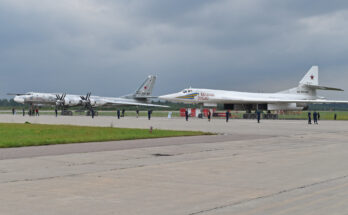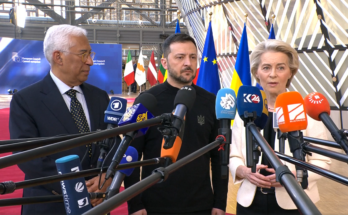
Azerbaijan’s Air Force may be taking steps to fill a long-standing requirement for fighter aircraft. On February 22, Azernews reported that Azerbaijan’s Air Force inked a $1.6 billion deal with Pakistan Aeronautical Complex (PAC) for the purchase of JF-17 Block III combat aircraft, along with unspecified “ammunition.” The total quantity of jets was not reported, nor were other details, such as delivery schedule, provided.
Neither government has publicly announced the deal, and the recent reports only refer to anonymous sources in Islamabad as disclosing the information, adding to a long list of similar thinly-sourced or vague reports over the years about the JF-17 negotiations. There was rumor that Azerbaijan would begin receiving the jets in 2019, but those deliveries never manifested. Thus while Azerbaijan has stocked its military in recent years with new unmanned aerial systems, missiles, and artillery, its requirement for new combat aircraft has stood open, even as it acquired Super Mushshak basic trainers from PAC.
Azerbaijan certainly has the finances to acquire new fighter jets, whether from Pakistan or another supplier. The country’s combined defense and security budget will reach AZN6.4 billion ($3.8 billion) in 2024, buoyed by oil and gas exports. Moreover, the Air Force’s existing fleet – ranging from MiG-21s, MiG-29s, Su-24s, and Su-25s – is quite aged, with the median airframe age well over 30 years old.
One factor extending the negotiations has been waiting for the JF-17 program to mature with the Block III version. Pakistan began producing the Block I version of the aircraft in the late 2000s, and Block II JF-17s began joining the Air Force in 2015. Deliveries of the Block III edition – with new AESA radar, new navigation gear, and better armaments – got underway to the Pakistani Air Force in March 2023.
While Baku could look elsewhere for acquisitions in the meantime, its options on international markets are limited and have narrowed in recent years. Azerbaijan’s primary defense partners are Israel and Turkey, neither of which have a combat aircraft for sale on the market today. In July 2023, Azerbaijan joined Turkey’s Kaan fighter jet project, a strong signal that Baku will eventually procure the aircraft. Kaan is still in early stages, however, having made its maiden flight on February 21, and thus procurement for the Azeri Air Force is not realistic until the 2030s, when full production is underway.
Russia, particularly in the early 2010s, sold a substantial amount of military hardware to Azerbaijan, including surface-to-air missiles, main battle tanks, multiple rocket launchers, and attack helicopters. Various Russian media reports in the late 2010s pointed to Rosoboronexport (ROE), Russia’s state arms exporter, marketing to Azerbaijan the Su-30SM, four of which were also sold to rival Armenia, as well as other jets from that family, such as the Su-35 and Su-34. Azerbaijan has also been floated as a customer for the MiG-35, a development on the MiG-29.
It could be the case that the threat of CAATSA sanctions helped deter Baku from buying more Russian equipment, as signed orders with ROE fell off after CAATSA took effect in early 2018. And by 2022, Russia had committed its military to fighting in Ukraine, which turned its production lines primarily towards supplying frontline forces and replacing battlefield losses, including substantial numbers of combat jets.
Elsewhere, acrimonious Azeri-French relations will prevent negotiations over the Rafale, and it would be unlikely to see Azerbaijan approved for American-made jets like the F-16. Azerbaijan has deepened ties with Italy’s Leonardo recently, signing for C-27J transport aircraft last summer. But a deal for the company’s M-346 advanced jet trainer, which can be used in combat roles, appears still to be stuck in negotiations.
Process of elimination has thus worked in the JF-17’s favor. If Azerbaijan does move forward with an order, how many jets might it buy? While that figure has never been confirmed, the reported $1.6 billion price tag offers some guidelines.
The JF-17 supposedly costs around $25 million per plane, although that figure probably does not account for all the factors that would go into a deal, including training, spares, missiles, and other add-ons that can drive the total cost well above the sticker price. By way of comparison with another alleged sale in the works, Iraq is said to be looking at a purchase of 12 JF-17 Block IIIs at a cost of $664 million. That effectively works out to around $55 million per unit.
Back of the napkin math would imply an Azeri order, if and when it comes, for at least three dozen jets, which would be a significant milestone for Azerbaijan, enough to completely replace the country’s air fleet. For PAC, signing an export order of that size would moreover be a substantial achievement, as it would be the largest export deal in the company’s history. A sale to Azerbaijan would serve as a boost for the JF-17 program, whose export sales have lagged, and the crisis-gripped Pakistani economy generally.
Military markets analyst, covering Eurasia, Middle East, and Africa.




